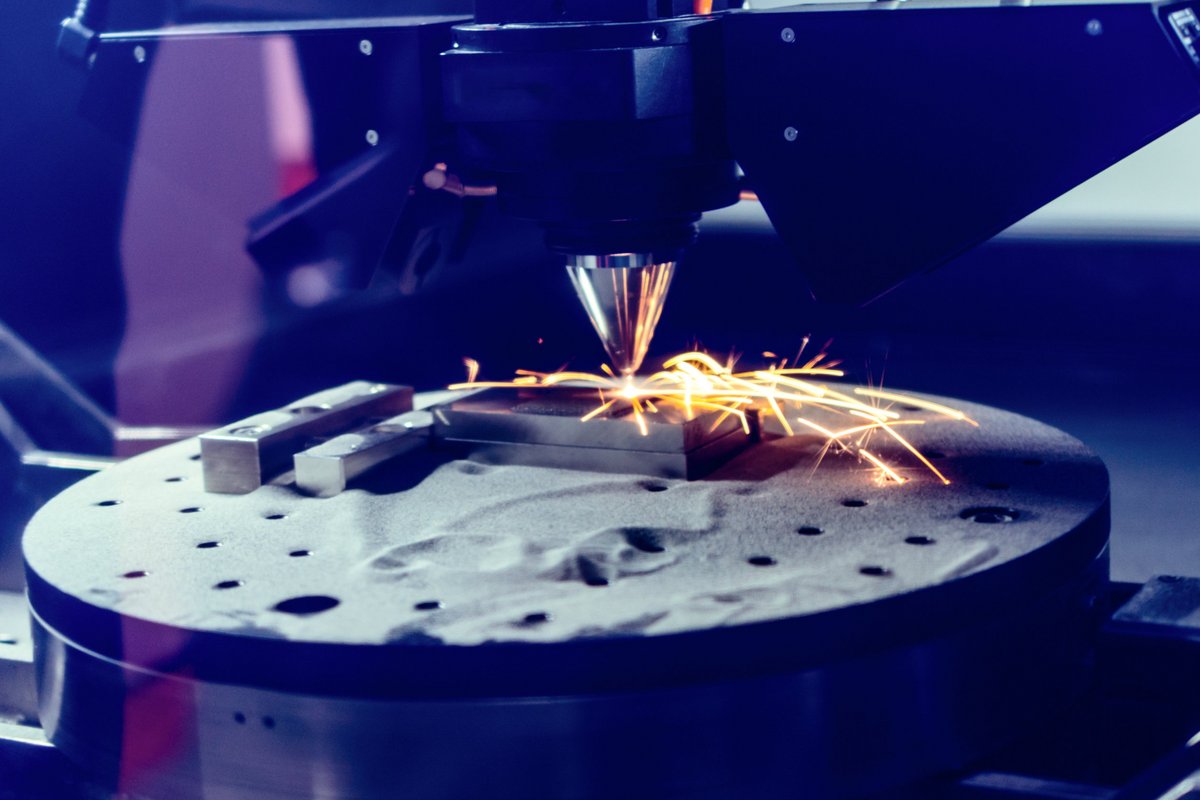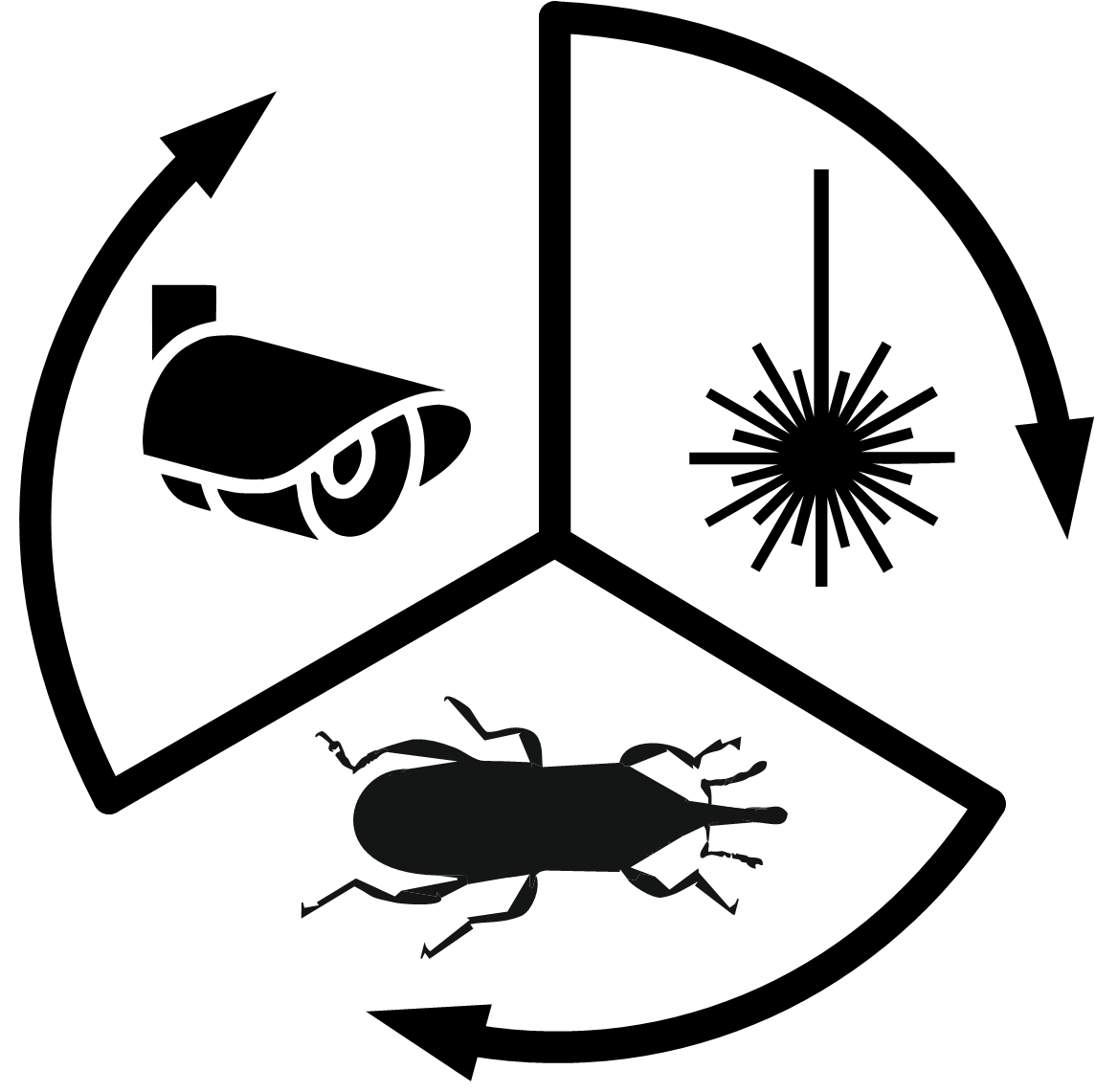
PROJECTS Other Applications
Perspectives in Stochastic Optimization and Applications
Abstract
In powder-bed additive manufacturing, a laser beam melts a thin layer of metallic powder, which solidifies during cooling and bonds to the already processed solid material. After finishing one layer, the surface is covered with a new thin powder layer, and the melting process iterates, until an entire three-dimensional object emerges. Due to the uneven heat distribution created by the laser beam, the part is usually under stress during the production which can lead to significant warping after cooling. Here, we study whether the order in which each layer is processed can be used to reduce warping in the finished product. As warping is difficult to model and predict, we use several approaches to approximate this effect, such as computing heat gradients and expansion through heat. These approximations are used to generate different objective functions for the mixed-integer linear program.
Main project results
- In a first step, we developed a numerical simulation of the SLM printing process. This model was supplemented with machine-learning techniques to evaluate the geometries of the printed shapes, as well as the properties of the cooling process.
- Building on these results we devised automated methods for optimizing the printing orders using mixed-integer programming.
- Furthermore, we designed new algorithms which can be used for automated quality control in an on-line setting.
- These results were tested in practical experiments by our project partners from engineering using state-of-the-art printing machines at the BTU Cottbus - Senftenberg.
References
| [1] | Bambach, M., Fügenschuh, A., Buhl, J., Jensch, F., & Schmidt, J. (2020). Mathematical modeling and optimization for powder-based additive manufacturing. Procedia Manufacturing, 47, 1159-1163. |
| [2] | Beisegel, J., Buhl, J., Israr, R., Schmidt, J., Bambach, M., & Fügenschuh, A. (2021). Mixed-integer programming for additive manufacturing. Submitted. |
| [3] | Bähr, M., Buhl, J., Radow, G., Schmidt, J., Bambach, M., Breuß, M., & Fügenschuh, A. (2021). Stable honeycomb structures and temperature based trajectory optimization for wire-arc additive manufacturing. Optimization and Engineering, 22(2), 913-974. |
| [4] | M. Breuß, J. Buhl, A. M. Yarahmadi, M. Bambach, P. Peter (2020). “A Simple Approach to Stiffness Enhancement of a Printable Shape by Hamilton-Jacobi Skeletonization”, Procedia Manufacturing 47, 1190-1196 |
| [5] | C. Hartmann, A. M. Yarahmadi, M. Breuß (2021). “Learning Laser Beam Trajectories for Optimization of Powder Bed Fusion Printing using a Multi-Phase Nucleation Model Coupled with Heat Simulation”. Submitted |
Duration
01/2020 - 12/2021, 24 months
Mission statement
To improve the production quality of powder-bed additive manufacturing using mathematical optimization tools to find optimal printing paths.

Researchers:
Armin Fügenschuh
BTU, Ingenieurmathematik und Numerik der Optimierung
T +49 (0)355 69 3127
fuegensc(at)b-tu.de
Carsten Hartmann
BTU, Stochastik und ihre Anwendungen
T +49 (0)355 69 4150
carsten.hartmann(at)b-tu.de
Michael Breuss
BTU, Angewandte Mathematik
T +49 (0)355 69 2904
breuss(at)b-tu.de
Projektleiter:
Prof. Dr.-Ing. Sebastian Härtel
BTU, Hybride Fertigung
Konrad-Wachsmann-Allee 17, 03046 Cottbus
haertel(at)b-tu.de
Dr. rer. nat. Jesse Beisegel
BTU, Ingenieurmathematik und Numerik der Optimierung
Platz der Deutschen Einheit 1, 03046 Cottbus
beisegel(at)b-tu.de
M.Sc. Johannes Schmidt
BTU, Ingenieurmathematik und Numerik der Optimierung
Platz der Deutschen Einheit 1, 03046 Cottbus
Johannes.Schmidt(at)b-tu.de
Dr. rer. nat. Ashkan Mansouri Yarahmadi
BTU, Ingenieurmathematik und Numerik der Optimierung
Platz der Deutschen Einheit 1, 03046 Cottbus
ashkan.mansouriYarahmadi(at)b-tu.de
M. Sc. Mahmoud Eltaher
BTU, Angewandte Mathematik
Platz der Deutschen Einheit 1, 03046 Cottbus
Mahmoud.Eltaher(at)b-tu.de
Dr.-Ing. Johannes Buhl
BTU, Hybride Fertigung
Konrad-Wachsmann-Allee 17, 03046 Cottbus
johannes.buhl(at)b-tu.de
Prof. Dr. Markus Bambach
Neue Fertigungstechnologien, ETH Zürich
Technoparkstrasse 1, 8005 Zürich, Schweiz
mbambach(at)ethz.ch
Funded by
EFRE
SENSOR-AKTOR-KI
Abstract
The aim of the project is to evaluate the use of customized sensor-related or actuator-related signal preprocessing using AI-based methods (focus: TinyAI/Embedded AI) using the example of IPMS sensors and actuators in combination with the IPMS RISC-V computing platform EMSA5. Existing IPMS sensors and actuators are to be analyzed and categorized with respect to local preprocessing. Likewise, suitable AI methods are to be defined, practically implemented and analyzed. Furthermore, an AI library for the RISC-V platform will be ported. Finally, the complete AI process chain for embedded systems can be implemented for selected sensors/actuators on RISC-V basis. Demonstrator setups will exemplify AI-based signal processing with real-time data from sensors and actuators.
Main project results
- Approach validated for embedded AI projects with IPMS sensors
Use cases: predictive maintenance and composition of liquids investigated - Tensorflow Lite library ported to EMSA5 RISC-V processor
- Implementation of demonstrator hardware and software
Duration
01/2021-12/2021, 12 months
Mission statement
Customized sensor and actuator related signal preprocessing using AI-based methods (TinyAI/Embedded AI) for RISC-V platforms

Researchers:
Sebastian Meyer
Fraunhofer IPMS
Institutsteil Integrated Silicon Systems ISS
T +49 (0)355 69 3210
sebastian.meyer(at)ipms.fraunhofer.de
Projektleiter
Andreas Weder
WMS
Maria-Reiche-Str. 2, 01109 Dresden
andreas.weder(at)ipms.fraunhofer.de
Funded by
FHG/IPMS (EFP)
New methods of optical early detection and pest-free control of insects harmful to stocks using laser beams (insect laser)
Abstract
In this joint project, the optical early detection of insects that are harmful to stocks and their pest-free control with laser beams was investigated. To detect the pests, a camera image scanning a grain surface is evaluated by an artificial neural network. The coordinates of the detected pests are then transferred to a laser control unit, which moves a laser to the coordinates and kills the insects using a laser beam. For detection, a YOLOv4-Tiny network was trained to traverse the 2048 x 2048 pix camera image sequentially, at 512 x 512 pix. The subframes are evaluated at 25 fps, achieving a detection accuracy of 93%.
Main project results
- We have successfully developed an AI system to detect the grain weevil on a grain surface.
- Furthermore, a low-cost laser was determined to kill the insects without permanently affecting the stored material.
- Detected insects can be saved as sample images with coordinates, time and object class to build a database for further training data for the artificial neural network.
Duration
09/2017-8/2020, 36 months
Mission statement
Development of pattern recognition based on weak AI for insects harmful to stocks (grain weevils) and their subsequent pest-free control.

Researchers:
Christian Hentschel
BTU, Medientechnik
T +49 (0)355 69 2128
fg-medientechnik(at)b-tu.de
Projektleiter
Dr. Cornel Adler
Julius Kühn-Institut
Königin-Luise-Str. 19, 14195 Berlin
cornel.adler(at)julius-kuehn.de
Kirko Große
Lehrstuhl Medientechnik
Siemens-Halske-Ring 14, 03046 Cottbus
kirko.grosse(at)b-tu.de
Funded by
BMEL
AI Summarizer
Abstract
The AI summarizer is useful for summarizing longer texts to get a quick overview. Be it long legal texts, documentation or manuals, the possible applications are diverse.
The AI method used comes from unsupervised learning and is called "Unsupervised Multilingual Sentence Boundary Detection". This AI method is part of the so-called "Natural Language Processing (NLP)", i.e. the processing of natural language by a computer.
Main project results
- Public usable demonstrator for the application of the AI method NLP
References
| [1] | Kiss, T., & Strunk, J. (2006). Unsupervised multilingual sentence boundary detection. Computational linguistics, 32(4), 485-525. |
| [2] | Voekler, S. (2021). Machine-Learning-Verfahren in der Produktlinienoptimierung - Simulationsrechnungen und Robustheit, Doktorarbeit, BTU Cottbus – Senftenberg. |
Duration
05/2021 - 08/2021
Mission statement
To sensitize the public, especially SME, for the application of AI systems.

Researchers:
Projektleiter
Sascha Vökler
Mittelstand 4.0-Kompetenzzentrum Cottbus, LS Automatisierungstechnik
Siemens-Halske-Ring 14, 03046 Cottbus
sascha.voekler(at)b-tu.de
Funded by
BMWK
Quantum Information Access and Retrieval Theory
Abstract
QUARTZ (Quantum Information Access and Retrieval Theory) is an Innovative Training Network (ITN) that aims to educate its Early Stage Researchers to adopt a novel theoretically and empirically motivated approach to Information Access and Retrieval (IAR) based on the quantum mechanical framework that gives up the notions of unimodal features and classical ranking models disconnected from context.
The current state of the art of IAR is not sufficient to address the challenges of a dynamic, adaptive and context-aware user-machine interaction and to make a major breakthrough in the overall effectiveness of retrieval systems, and that a genuine theoretical breakthrough is on the contrary necessary.
Main project results
Website
Duration
01/2017-12/2021
Mission statement
To devise a ... / To build aWe believe that this breakthrough can be provided by quantum theory which can integrate abstract vector spaces, probab ...
Researchers:
Ingo Schmitt
BTU, Datenbank- und Informationssysteme
T +49 (0)355 69 2039
ingo.schmitt(at)b-tu.de
Projektleiter
Massimo Melucci
University of Padova, Italy
Via Gradenigo 6/b 35131 - Padova Italy
massimo.melucci@unipd.it
externe Partner
Christina Lioma
University of Copenhagen, Denmark, Department of Computer Science
Nørregade 10, PO Box 2177 - 1017 Copenhagen K
c.lioma(at)di.ku.dk
Dawei Song
The Open University, The United Kingdom, Department of Computing and Communications
Walton Hall, Milton Keynes, MK7 6AA, UK
dwsong(at)tju.edu.cn
Funded by
Horizon 2020, European Training Networks (MSCA-ITN-ETN)
*completed







